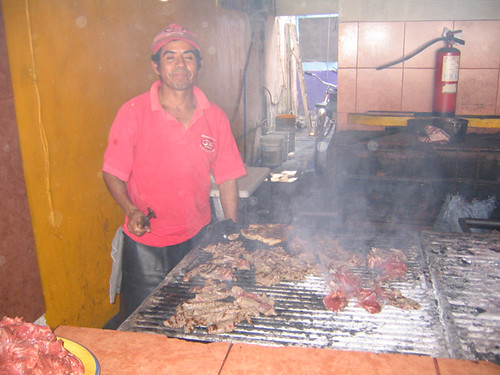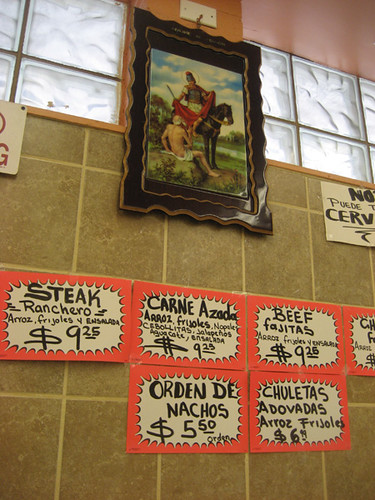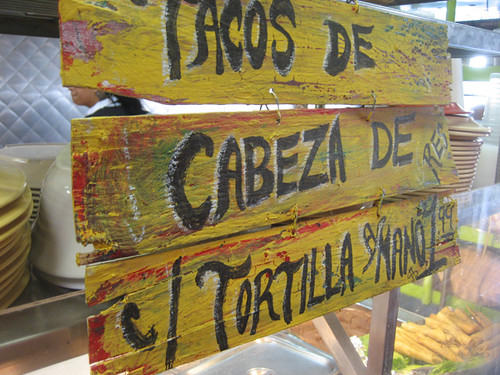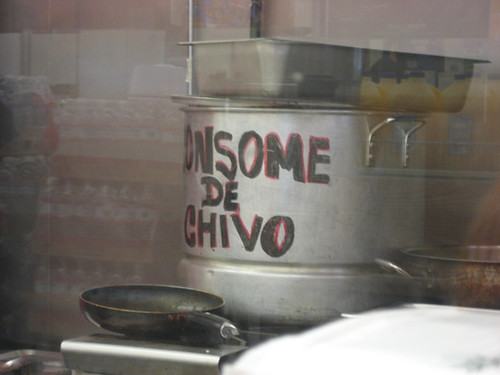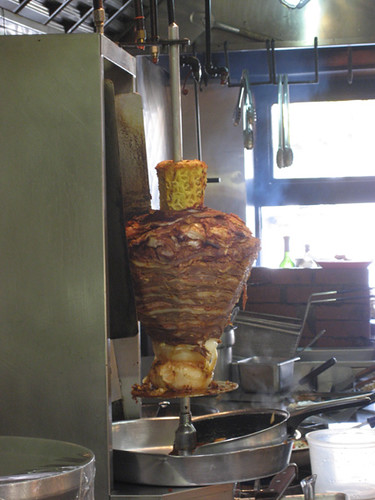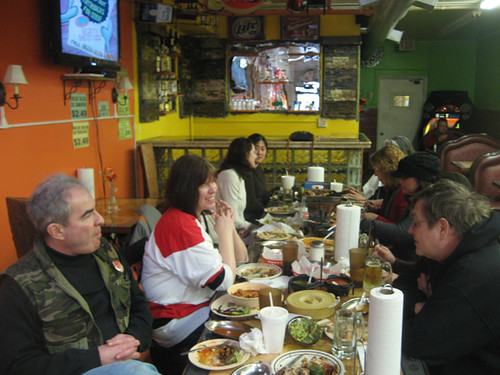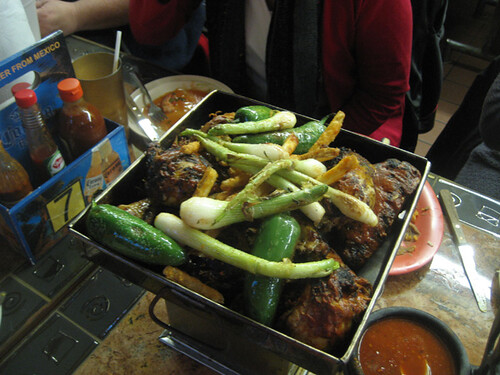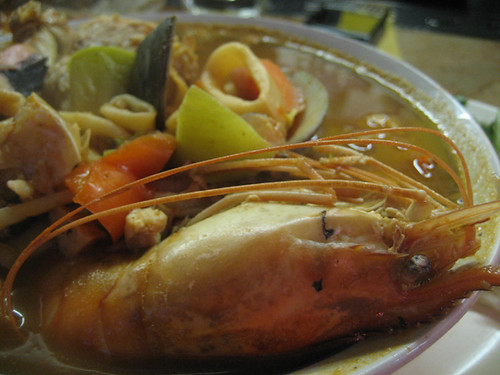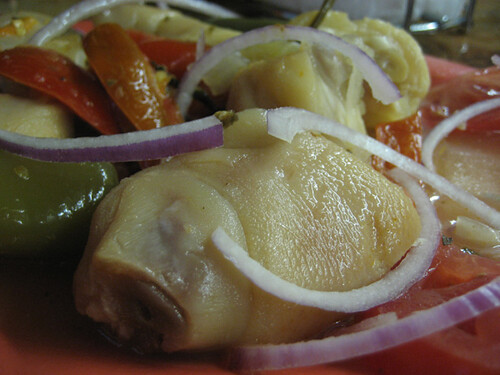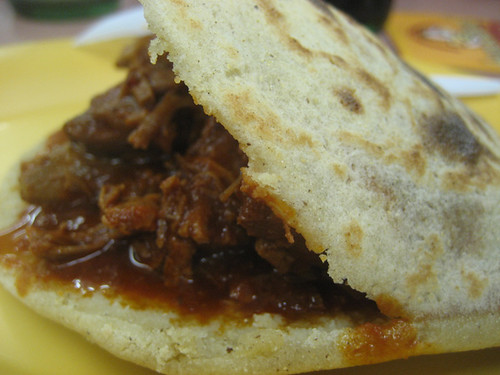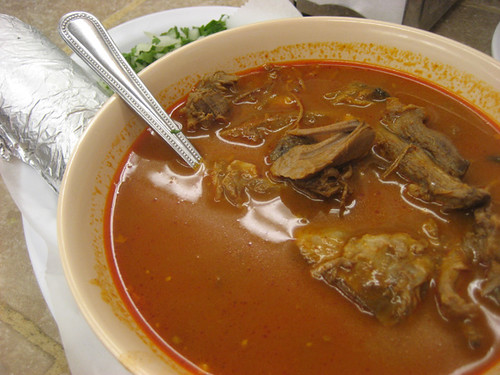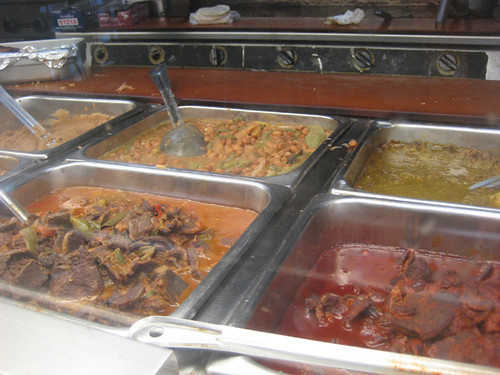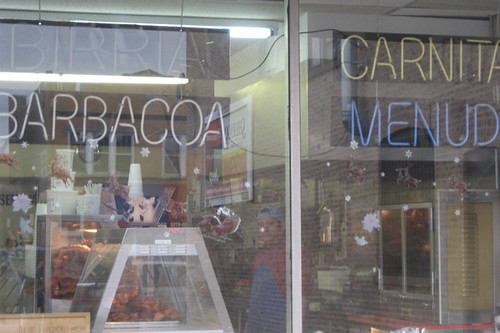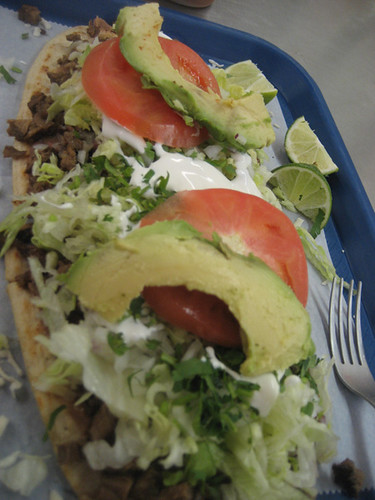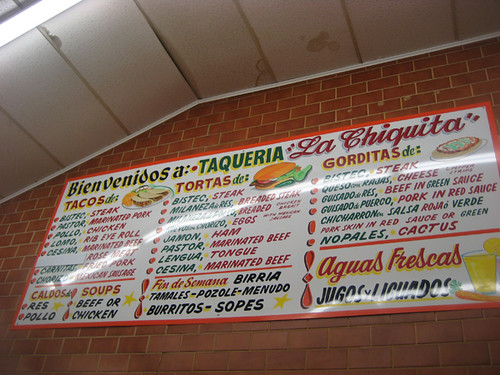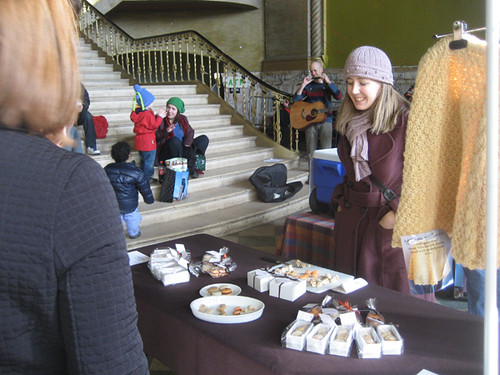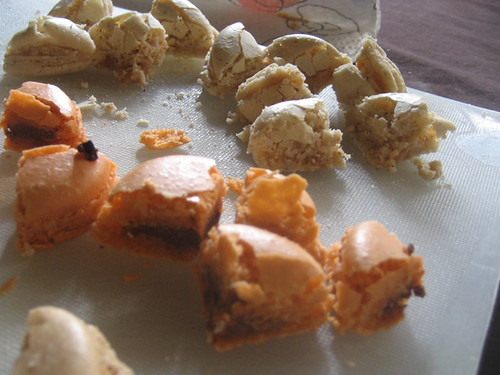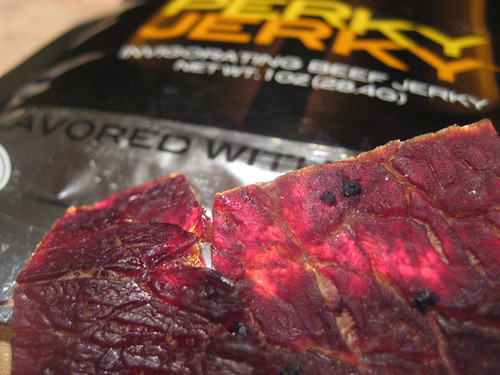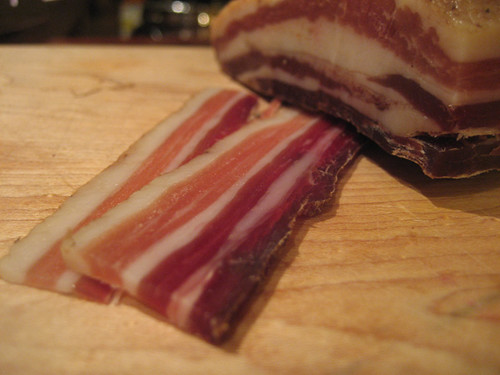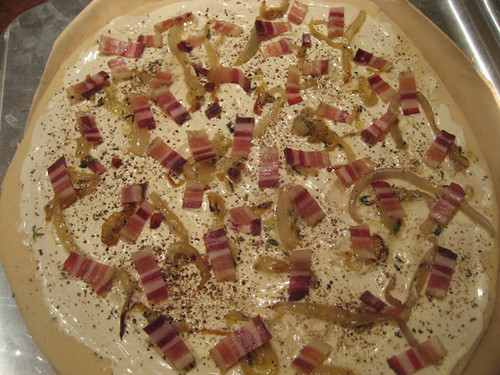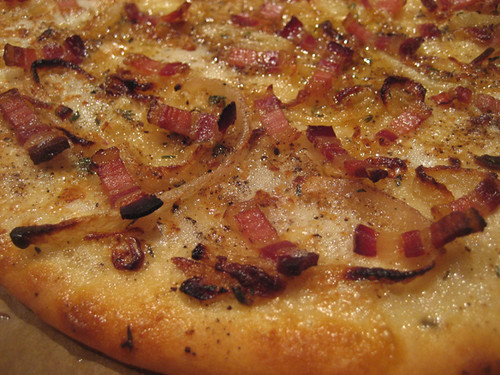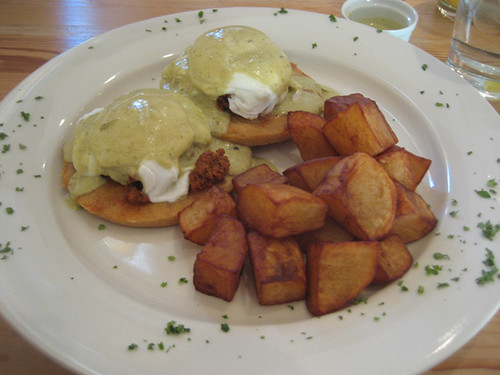
Our conversation (see parts one, two, three and four) concludes:
MICHAEL GEBERT: One of the things that was interesting to me back when I ran LTHForum was that people, given a chance to talk about whatever they wanted to talk about, tended not to want to talk about the things that were hot in food media. Sure, there was some degree of interest in the hot new restaurants, and TV shows, and so on, but there was twice as much interest in how to make good fried chicken, or some old place that everybody loves, or whatever. And we too have mostly ignored the obvious year-end subjects in favor of more personal reflections on the state of food-dom in 2009 and beyond.
Well, enough of that! Let’s conclude with a bout of sheer hackdom, talking about the same things everybody else is talking about in year-end pieces. I’ll throw out three (one of which is clearly more interesting to me than the others), and through the magic of cut-and-paste, juxtapose your takes after mine. Batter up:
Gourmet Magazine Closing. My feeling is it’s a mistake to view Gourmet as the business. The business is Conde Nast’s food magazine business, and Gourmet was one tactic for capturing a chunk of the available dollars in that space, Bon Appetit is another. And as soon as any tactic stops paying out, you kill it, unsentimentally. Personally, I will be amazed if Gourmet is not revived at some future date in some form, because I strongly suspect that killing it was a way of getting rid of a bloated, boom-year-sized payroll, but they’ll find a use for the brand after a suitable interval. In any case, although I’m certainly sorry to see a good-paying outlet vanish, it wasn’t a magazine that meant that much to me today, or seemed that different from all the other food magazines all offering the same tips over and over (10 Aussie wines to pair with quick and easy frazzablazzit) in a way that, frankly, makes it hard for me to read anything in any of them without feeling I must have read it before. If Saveur closed, then I’d cry a little.
MICHAEL NAGRANT: I agree with you regarding the reasons why Gourmet closed. It was a pure Bob’s from Office Space consultant killing of a redundancy. Or if you want to be really nefarious, I suspect that maybe there was some serious entitled bloat going on at high editorial levels that pissed someone off. Then again, as long as Ann Wintour reigns supreme at Vogue and Graydon Carter at Vanity Fair, Conde Nast seems to love paying for spendthrift behavior.
I don’t agree however about the magazine degenerating to a retail pamphlet edited by starfucking editors who dream about designer cupcakes and spritzers while subsisting on a starvation diet 90 percent of the year. I think Gourmet was one of the last bastions (Saveur of course still lives) of good storytelling in food writing. Francis Lam’s stories where he’d go hang out with some old school Chinese chef for a few weeks were some of my favorite pieces published anywhere in the last few years. Interestingly his tenure shepherding the new Salon, save for a piece here and there has not featured his strength, but rather focused on more newsy short bloggy stuff. I’m guessing that’s a function of resources as much as anything, i.e. he doesn’t have the budget or the luxury to go disappear wherever he wants for weeks at a time to get a story, rather he needs to stay behind and feed the daily internet monster, lest Salon disappear like the old Victorian and French intellectual gathering spots for which the site is named.
GEBERT: Top Chef. Okay, it’s television and therefore hypey and hokey. We concede that point, your honor. But you know, the world has a lot of astrophysicists who got interested in space because of Star Wars, and to me it’s pretty amazing that there’s a pop culture phenomenon bringing the most avant-garde cooking of our time into a lot of homes. I made the comparison with music earlier and said that people who think everyone should know Barenboim should know Achatz, too; but classical music would kill to be getting that kind of exposure right now, and I have to think that’s going to produce some long-running effects, that kids in a small town where the best restaurant is a Village Inn are seeing Thomas Keller on TV and thinking, I could be him when I grow up!
NAGRANT: As is already the case now, those kids are more likely getting hoodwinked in to spending $30,000 for a generally worthless vocational education at culinary school all in the pursuit of rare and elusive celebrity. That being said, Top Chef is good. Tom Colicchio protects the integrity of the culinary profession as much as he can and Gail Simmons completes me. So that’s good enough for me. However, what I find is that the last five weeks are always the most compelling part of the show. The first 10 weeks are so are always populated with a bunch of vaudevillian jokers and racial stereotypes who don’t know how to salt properly. I know casting is tough, but the show would be that much better if they insisted on only casting say 10 really talented folks.
GEBERT: Twitter. Both bigger and smaller than the hype machine has portrayed it this year. Smaller in itself, but as one popular tool, it’s one very good example of where I think the media as a whole have to go.
There was a telling moment in one of those back-and-forths on Twitter this year where people (I name no names) were ragging on Phil Vettel, why doesn’t he get with it, tune in turn on and tweet out, and Kevin Pang said “Phil’s plenty big without Twitter.” Which, despite its vague echo of Gloria Swanson in Sunset Boulevard (“I am big, it’s the tweets that got cut to 140 characters!”), is surely true— but only a tiny handful of people at any given paper have that level of brand identity. And if you’re at all smart and have initiative— like Mr. Pang— you’re looking for ways to extend your brand beyond the corners of your newspaper, which for all you know may not be here tomorrow (or at least you may not be at it tomorrow).
And Twitter is one way you can do that, though far, far from the only one (you might, for instance, do a show about cheeseburgers), or even maybe a typical one. But the fundamental change in how we should view media is that we’re no longer pretending that a million people read every single word in the paper every day. We now have clicks and meters to tell us that the numbers for any given piece are far smaller— but they’re the ones who are hyper-interested, who take the paper or seek you out online precisely because they really are interested. And your future lies in, on some level, engaging those people, the ones who really care. Cluing them into the process, into what you just ate, making your life a bit of a public spectacle, is a natural way to inculcate their loyalty, make them feel a little bit like insiders which is always seductive. And Twitter has proven to be a great tool for that. (If you’re in the media and you feel like you’re clueless about how to do this, here’s simple advice: do whatever Roger Ebert does. Nobody has been savvier, by like a factor of 10, about building a personal brand over the last 40 years, to the point where I’m convinced his brand is worth substantially more than his paper’s is.)
Now Twitter’s weird status between two worlds— it’s not quite media, but it’s a lot more public than instant messaging your actual, real-world friends— has been a source of controversy. You went after Steve Dolinsky for tweeting opening night impressions of Big Star, in violation of the reviewer’s gentleman’s agreement not to review until a month has passed. I mostly came down on the side that an opening tweet is not a review, but that’s not because I don’t think that Dolinsky was breaking that agreement by sending out an opinion, however brief, to basically the whole world. I think he was, and I think he was perfectly fine to do so, because it’s passe. The food media world is now about ongoing impressions, not one impressively final review, for all those reasons I talked about the other day. But I understand that not everyone agrees that they got that memo.
Even more interesting to ponder is the recent dustup where the publicist Ellen Malloy sent out a tweet about one of the restaurants she reps (The Bristol) being named a top restaurant of the year by GQ magazine. The only thing was, a bunch of places promptly announced that The Bristol had won this honor… without realizing that The Bristol wasn’t the only one in Chicago honored in that issue. It was merely the only one that was a client of Ellen’s. And some people suggested she had violated journalistic ethics in omitting the others— as if Ellen Malloy’s Twitter account, with a couple of thousand followers, was now a fully accredited media news source alongside the Tribune and CBS and obligated to follow certain rules (which, needless to say, conflict flagrantly with her intended career). That would come as news to a lot of teenagers using Twitter to moon over the guy who plays Edward in Twilight, I suspect. So it’s dubious to go that far, but can you absolutely say that someone sending out news to four digits of people clearly is not a news source? She is… just a new kind, who cut out the press middleman, which is something people aren’t entirely used to, yet.
So there’s a lot of interesting stuff going on, and Twitter was at the heart of a good amount of it. Something else may be next year, and Twitter may soon be as dead as the big media food blogs which now frequently go silent for a week at a time. But it’s this year’s example of a phenomenon that’s far-reaching and transformative.
NAGRANT: I didn’t take issue with Dolinsky for reviewing on opening day. In fact, at one point, I expressed my admiration that he was using the medium so well. What I took issue with was how he pretended like he was surprised that what he Tweeted would have any influence. He knew full well that it would, and that’s why he was doing it in the first place. I just wanted him to own it.
As for branding, etc. I can appreciate business people like Ellen who make it it an important part of what they do. She’s in it to grow her business, and that’s what she’s doing. But, she’s not a journalist. She’s a promoter of the people who pay her to promote. She happens to be paid by some of the most interesting, talented, and high quality people around, and thus you won’t go terribly wrong by following her lead, nor does she need to be Don King and fluff up the facts as some PR folks do. However, you should understand you also won’t always get the full picture.
As for journalists focused on “branding”, I’m a little more suspect. I’m not sure Ebert was focused on branding as much as he organically grew his reputation based on the quality of his work. As his following grew in relation to his talent, he took advantage of the opportunities that afforded, i.e. a broader television platform and a branded website, and was savvy enough to explore those opportunities. My sense is that he came to Twitter because he is first and foremost a rabid writer. It’s his drug, and Twitter is just one more fix, especially for the short form thought, which he has no lack of.
I know I came to Twitter not as a means of branding as much as another place to share and explore my passions and also for the community. As a freelancer whose only daily colleague is my blue couch, I appreciate the ability to talk to my fellow writers and food enthusiasts as if I were at the water cooler, albiet a much more engaging one where I can drink the occasional whiskey if I choose. I don’t discount the value of being able to send a link out to followers and have a way of sharing my work. I appreciate and use that. However I’m not sitting around tracking Twitter keyword searches for my name, or “chicago food” or whatever and engaging people to build my follower base as I’m sure many are and as I would if I was really worried about branding.
Furthermore, once you start worrying about branding too much, I think you’re tempted once again to compromise your integrity. I mean if I was really interested in my brand, I wouldn’t have spent three or four days tracking what I was interested and inspired by i.e. following Rob and Allison Levitt as they opened Mado or dining at the tiny Senegalese joint on the north side that maybe two people will eat at when they read my piece. I’d be focused on only covering guys like Bayless, Kahan, and Izard more often because they have the ability to move eyeballs.
That being said if I worked for an organization like the Trib and I thought my valuable institution as well as my health care and living wage and those of my friends around me were in jeopardy, I would like Ebert has with the Sun Times try to lift all ships, even if that meant being agressive about branding. If I were an editor or manager I’d compel competition and creative social media approaches like using Twitter as a measurement of the quality of job you were doing no matter who you were.
GEBERT: Well, like a lot of things it comes down to a matter of taste; Ebert knows the value of having his name and mugshot big and bold on his book covers, but he also knows the value of not diluting the brand by taking easy money and doing commercials for microwave popcorn or whatever. It takes vigilance to become a pop culture figure without becoming a walking joke, and some cartoonization of yourself is probably inevitable. But more to the point, given that he’s been interactive with his readers online since the world was connected by Compuserve, that’s why I see him as a model for engagement with your core audience. (I once made an offhand crack about his readers writing one of his books— the movie cliches one— for him, in a freakin’ Usenet group, about as obscure a spot as you could get, and within three days he was in my email inbox, letting me know in no uncertain terms that he was the hardest workin’ man in show business. Impressive, in a mildly alarming way.)
As for the thing about publicists, I still feel you’re talking like there was something mildly shifty going on there. I guess the way I see it, ultimately, is— there’s news and there are journalists. Journalists used to be where news mainly came from (although there’s always been a category of news that everyone knew despite no journalist ever reporting it). Now news can come from people who aren’t journalists. It can come from people connected to the biz professionally. It can come from protesters in the streets of Tehran. It can come from somebody who served a famous food critic and can’t believe what a douchebag he was. And none of those people have a responsibility for meeting the ethical rules of a profession they never joined; we have that responsibility if we turn news into journalism, and readers, all readers, have the responsibility of evaluating what they read for themselves. But more news, from all directions, is a great thing.
NAGRANT: I don’t think anything shifty is going on. I trust Ellen Malloy. That being said, maybe it’s semantical or whatever, but I would call what she does information sharing or news sharing, but not necessarily journalism. Also, I totally agree, folks can operate on any level they want in terms of ethics and they’re not bound by some institutional rules. However, what I do believe is there are basic laws, unwritten, of course, about how we act as humans, the social contract if you will. Certainly that contract is fluid, however, I think when we’re brutally honest with ourselves and think about what really feels right and how we should be operating, we generally all come to very similar conclusions about what that contract looks like.
Mostly I’m arguing that instead of throwing out red herrings or constructing exceptions that justify behaviors as is the current state of affairs, I would wish for people to think more about how they really should act as journalists, citizen or otherwise, when they’re sharing news or gathering it. At the end of the day, if you operate under that level of thinking and are dilligent about your actions and you still say: I need to take that trip to Italy paid for by the Reggiano Parmagiano distributors Association and I know I can tell a good story and it’s a worthwhile story, then I can respect that.
GEBERT: All right, since we got off on media again, let’s end on a food note. Tell me something I should go out and eat right now.
NAGRANT: Despite my earlier suspicion about Dale Levitski not getting his stuff together for three years, I had a chance to try Sprout this week, and while it wasn’t perfect, that dude has some serious chops. Don’t know if you can score his “grilled cheese” which is basicaly a frico kinda thing stuffed with granny smith apples, caramelized onion, and served with a side of mustard, a la carte, but if so, you should. I gotta say after my meal, it’s too bad Henry Adaniya (former owner Trio) fled to Hawaii, because that dude had the golden palate having picked Tramonto/Gand, Shawn McClain, Grant Achatz, and Levitski to head up his kitchens back in the day.
Also, because I can never just say one thing, the carbonara at Kith and Kin made with housemade spaghetti a la chittara, house cured guanciale, and parsley topped with a raw (or very slightly cooked – no fact check on this) yolk will have you yellin’ bada bing faster than a mob hit.
GEBERT: Well, for me there’s no better response to the cold and snow than some hearty Mexican soul food. Go have a big bowl of consomme de chivo, goat consomme, weekends only, at the taqueria inside the Los Potrillos grocery, 3624 W. Belmont.
With that, we’ll call it a week. Thank you, Michael N., for joining me all week, and thanks to everyone who found our bloviating worth a visit. Eat early and often, it’s Chicago.
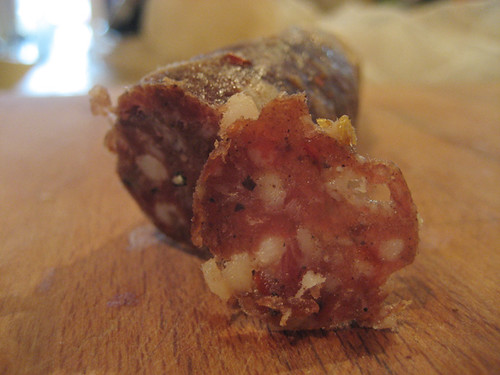


 Posted in
Posted in 

